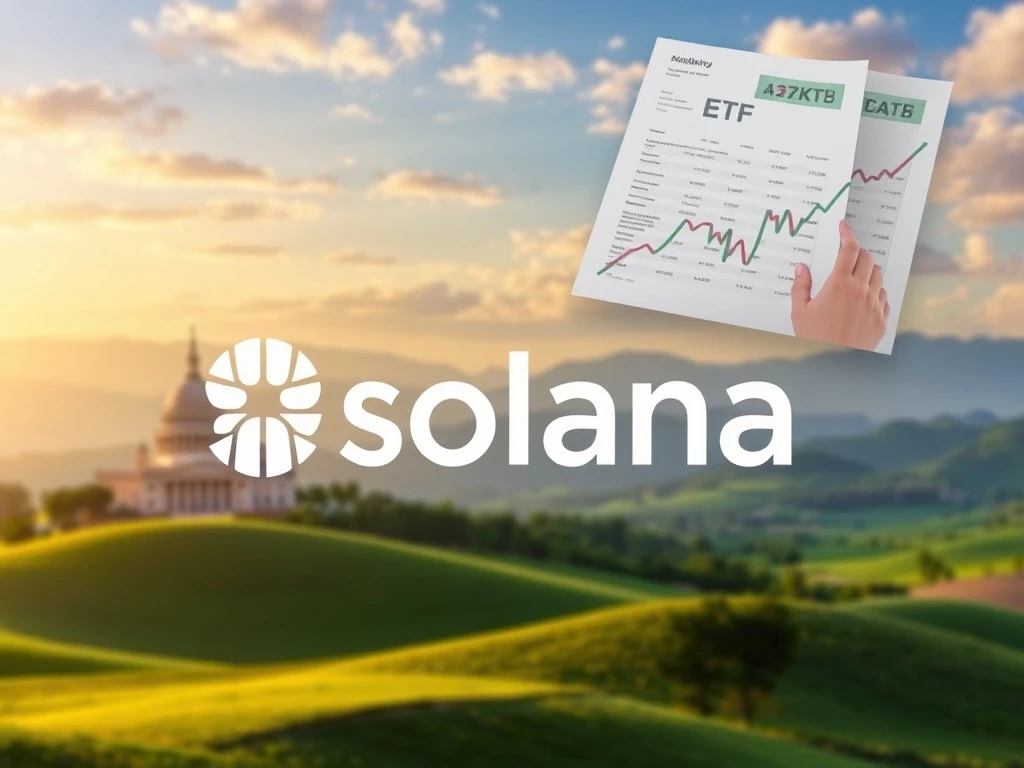Solana Price: Crucial Factors Unlocking the Path to $250

Investors keenly watch Solana (SOL) price movements. The popular altcoin navigates a complex market landscape. After a recent rebound, a crucial question remains: can SOL reclaim its previous highs and push towards the ambitious $250 mark? This comprehensive analysis explores the multifaceted factors influencing Solana’s trajectory. We will examine everything from network performance to significant regulatory catalysts. Understanding these dynamics is essential for any market participant.
Solana Price Recovery: Navigating Current Market Dynamics
Solana’s native token, SOL, recently experienced a notable surge. It climbed 10.5% after testing the $191 level last Friday. Despite this rebound, the SOL price remains 10% lower over the past two weeks. This performance trails behind rivals like Ether (ETH) and BNB (BNB). Traders are now assessing SOL’s potential to reach $250. They are also trying to understand the reasons behind its weaker performance compared to some competitors.
Investor sentiment saw improvement over the weekend. US President Donald Trump signaled his intention to prevent a government shutdown. However, Congress has not yet secured the 60 votes needed for a temporary funding bill by Tuesday. This situation risks “unpredictable and immediate economic ripples,” according to Yahoo Finance. Meanwhile, gold reached an all-time high of $3,833 on Monday. This underlines continued unease about the US fiscal debt outlook. Even with a short-term deal, the Treasury must pay over $1 trillion annually in interest. This widening gap between government revenues and expenditures pushes savers towards scarce assets. Cryptocurrencies are a prime example. Although the broader cryptocurrency market posted gains on Monday, SOL has struggled to hold the $212 level. This indicates underlying pressures specific to Solana.
SOL/USD (blue) vs. BNB, TRX, ETH. Source: TradingView / Crypto News Insights
Declining Solana Network Activity and Fee Revenue
A significant source of frustration among investors stems from declining activity across the Solana network. Over the past seven days, the number of transactions on Solana fell by 10%. Fees dropped nearly 50%, according to Nansen data. This reduction in Solana network activity signals a potential shift in user engagement. By contrast, several competitors posted notable increases. BNB Chain saw a 56% jump in fees. Arbitrum and HyperEVM more than doubled their fee revenue from the prior week. This disparity highlights a competitive landscape. Solana faces pressure to maintain its market share. Sustained high network activity is crucial for any blockchain’s long-term health and value proposition. The recent decline raises questions about Solana’s immediate competitive edge.
The Rise of Decentralized Perpetual Futures and SOL Sentiment
The rapid expansion of synthetic perpetual futures has also weighed on sentiment toward SOL. Platforms like Hyperliquid, Aster, and edgeX have gained traction. Solana once led decentralized exchange activity through platforms such as Meteora, Raydium, and Pump. This led many SOL holders to overestimate the network’s competitive edge. They focused on low fees and superior user experience. However, the new entrants pose a challenge. Hyperliquid, for instance, launched its own chain. This aims to reduce fees and eliminate validators’ maximal extractable value (MEV). Aster, backed by YZi Labs (formerly Binance Labs) and integrated with BNB Chain, also plans its own layer-1 network. These developments impact the perceived competitive advantage of Solana’s ecosystem. Consequently, they can influence the SOL price negatively. Traders are observing these shifts closely.
Crucial Catalysts: The Potential for a Solana ETF Approval
For SOL bulls, the strongest catalyst for reversing the token’s underperformance is clear. It is the anticipated approval of a standard exchange-traded fund (ETF) by the United States Securities and Exchange Commission (SEC). The regulator faces a final deadline on October 10. Analysts assign odds of 95% or higher to an approval. This fuels hopes for substantial institutional inflows during the first months of trading. A Solana ETF would provide a regulated and accessible investment vehicle. This could attract a broader range of investors, including traditional financial institutions. Such an approval would legitimize Solana as an asset class. It would significantly boost its visibility and credibility. This institutional validation is often a precursor to major price appreciation. Therefore, the market closely monitors any news regarding this potential approval.
Related: Aster weighs vesting schedules for token airdrop recipients
Addressing Solana’s Staking Inflation and Validator Sustainability
Solana’s momentum also hinges on how investors view its native staking yield. Critics warn that Solana’s staking inflation poses a risk. The network boasts nearly 1,000 validators. These validators incur significant setup and operational costs. According to X user ‘Boxmining,’ 76% of validator income on the Solana network comes from newly issued coins. This, rather than MEV or priority fees, forms the bulk of their earnings. This analysis raises questions about the sustainability of the staking reward rate in the coming years. A declining or unsustainable reward rate could weigh on demand for a Solana ETF. It might also impact the overall appeal of holding SOL. The long-term economic model of the network needs to ensure validator profitability through diverse revenue streams. This will mitigate concerns about inflation and maintain investor confidence.
Traders should not assume a price decline based solely on weaker on-chain activity. Inflows from companies accumulating SOL reserves and the potential approval of a spot ETF could set the stage for a SOL rally toward $250. The interplay of these factors will ultimately determine Solana’s trajectory. Understanding both the challenges and the catalysts is vital for an informed investment perspective.
This article is for general information purposes and is not intended to be and should not be taken as legal or investment advice. The views, thoughts, and opinions expressed here are the author’s alone and do not necessarily reflect or represent the views and opinions of Crypto News Insights.









